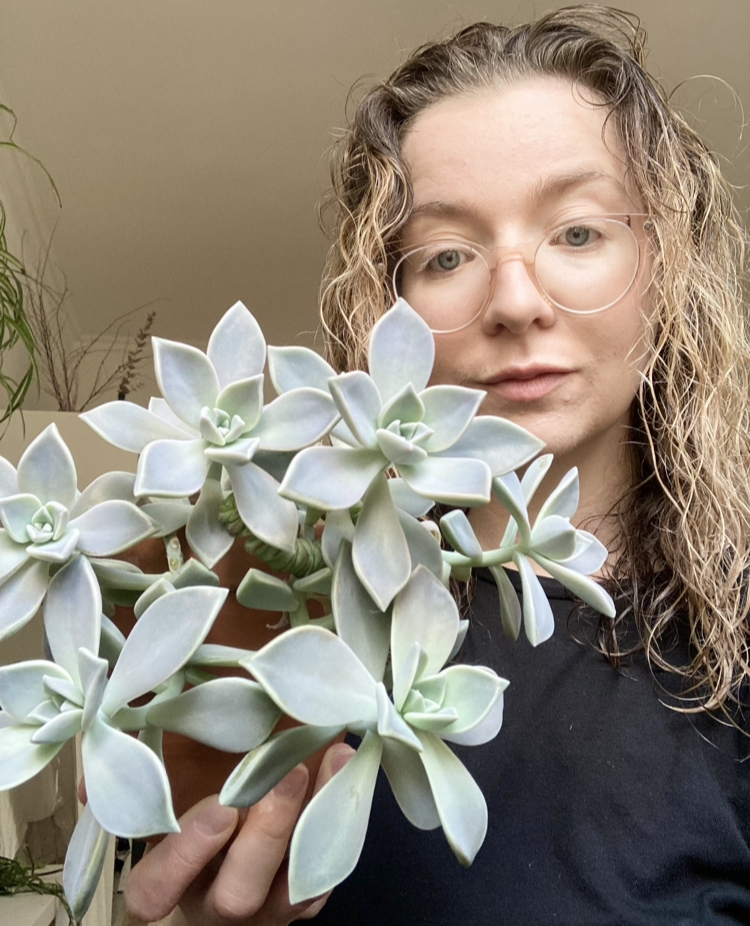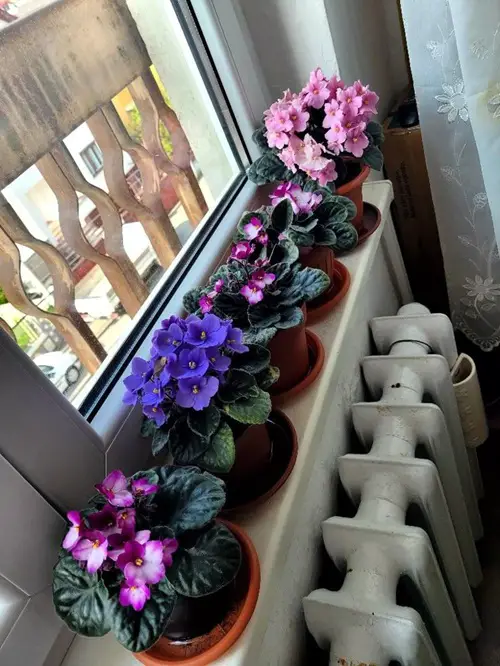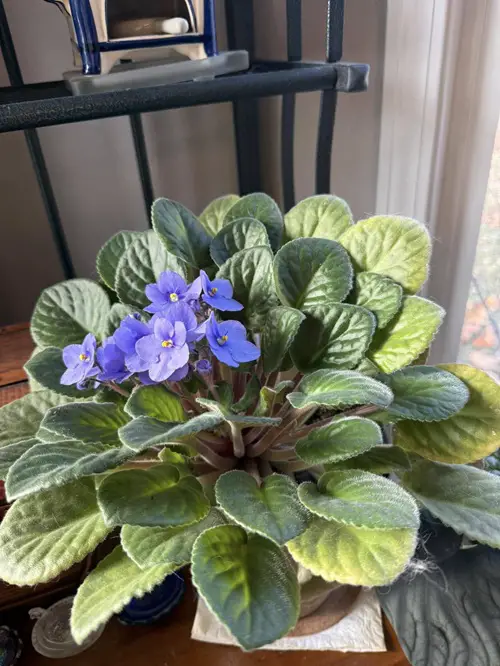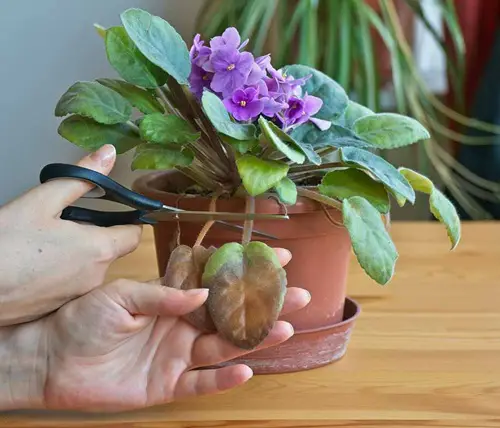Pinch and Prune African violets this way for fuller growth and an endless display of flowers in your home!
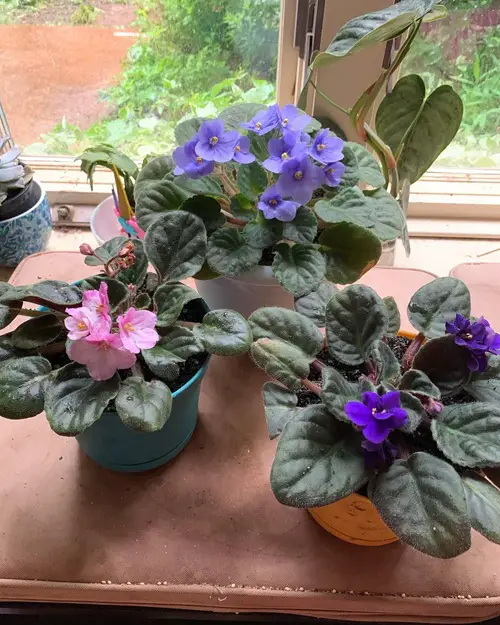
Do you know that you can make your African violet bushier and fuller just by pinching it at the right time? Learn how to do it perfectly below!
When to Prune and Pinch Your African Violet?
There is no perfect time to prune and pinch your African violet, as it can have different purposes. Besides that, you can never prune extensively like shrubs and other houseplants due to its compact growth. We’ve broken down everything for you.
- Pinching: When the plant is young and has 8-10 leaves, remove one or two central leaves carefully. This will promote lateral shoots and make the plant bushier.
- Regular Maintenance: To keep your plant looking tidy, you can do this every 3-4 weeks or any month (not during dormancy). Remember to remove the dead leaves or spent flowers slightly, and not overdo it every time.
- Full Pruning: Pruning in the fall can be more thorough, but again, it’d still be a light pruning. Cut back the foliage to reshape your violet if it’s lopsided or too heavy on one side; also, remove spent flowers. Snap off older and damaged outer leaves near the base to promote new growth.
- Deadheading: This is done during and after the blooming season. African violets have red, purple, blue, or black flowers, and once they are done blooming, you can go ahead and pinch them off to allow better quality and quantity of flowers. Easy, right?
How to Do It?

1. Inspect the Plant
Before you dive in, take a seat! Observe all parts of the plant and take note of the wilting leaves, spent flowers, and overcrowded foliage. These are the parts that need to be removed or trimmed. Once you’ve identified these, it’s time to prep.
2. Sterilizing the Tools and Wearing Safety Gear
If you are using your fingers to pinch off the spent plant parts, make sure your hands are properly washed. You can also use gardening gloves to add an extra layer of protection for both the plant and yourself.
Otherwise, use sterilized shears. Wipe them with rubbing alcohol before cutting to remove residue or rust.
3. The Cutting Technique
Twist and snap off the spent and dead flowers with your fingers without disturbing the rest of the plant. While pruning, the plant must be cut at an angle as it helps increase the recovery rate and prevent infection by water entering the wound.
For larger cuts, especially when removing entire leaves for propagation, apply a dusting of powdered cinnamon to the cut surface. It acts as a natural fungicide and helps prevent infections.
4. Cleaning and Propagating the Plant
If you wish to propagate your African violet using leaf cuttings, make sure they are intact and disease-free. An unhealthy cutting will either not survive or produce a weak plant.
Avoid pruning during extreme temperature fluctuations or when the plant shows signs of stress (wilting, leaf drop). It’s best to prune when the plant is actively growing and healthy.
Benefits of Pinching and Pruning African Violets
1. Keeps the Plant Looking Pretty
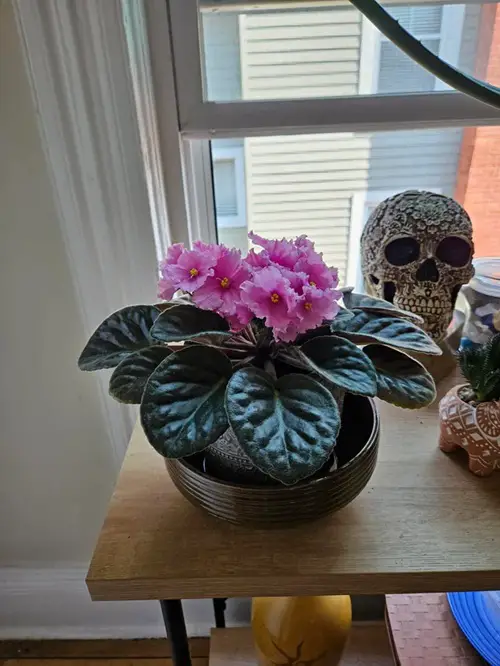
Nobody likes overgrown, messy plants. You must routinely trim and prune its foliage to maintain its form and appearance. Although it rarely grows to be over 18 inches, the compact rosettes of its fuzzy leaves can overlap when left unattended.
Overlapping foliage can hamper the plant’s photosynthesis process, as not all leaves can absorb sunlight as efficiently. So, along with the visual aspect, pruning is necessary to ensure the plant functions appropriately.
2. Makes Room for New Growth

Old, spent leaves and flowers are dead weight that burdens the plant. Your African violet will divert its energy into maintaining these unattractive parts, so pinching is required.
If you remove the spent foliage and blooms, the plant can allocate its energy to producing new and gorgeous replacements. This refreshes the plant’s look and also allows the new parts to contribute better than the old ones.
3. Promotes Better Air Circulation
You already know that the African violet is a compact indoor plant. It has iconic rosettes of thick, hairy leaves and thrives in humid conditions. These conditions often lead to fungal infections, and proper air circulation is required to combat fungal growth.
Although you must maintain the ideal humidity, do make sure there’s ample room between the leaves and prevent overcrowding.
4. Cuttings Can Be Used For Propagation
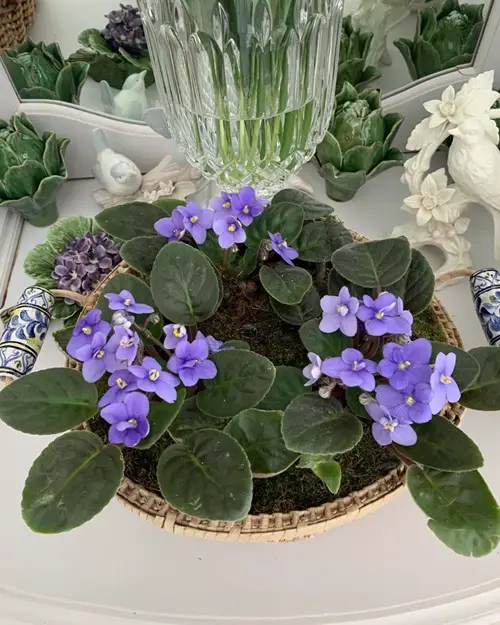
Did you know that pruning your African violet can create new plants? Yes, this evergreen perennial is often propagated by leaf cuttings. Snipping away large (but healthy) leaves can be used to form new plants.
This is the perfect way to increase your plant collection and keep the mother plant manageable. When taking leaf cuttings for propagation, select healthy, mature leaves from the middle rows of the plant. Don’t forget to allow the cut end of the leaf petiole to callus (dry slightly) for a few hours before planting to reduce the risk of rot.
5. Stabilizes the Plant from Beneath
Did you know that less stress on top allows better support from underground? By removing foliage or flowers from a top-heavy African violet, the roots are rid of unnecessary stress and can develop and function optimally.
It enhances their ability to grow, provide support, and absorb nutrients through water from the soil. How cool is that?
6. Helps Get Rid of Dead or Diseased Foliage
African violets are pruned or pinched to completely remove dead, infected, or damaged parts from the healthy plant. As the plant matures, it is obvious that the old leaves will eventually start dying. So remove them periodically.
Lastly, plant parts beyond repair and severely infested with pests should be snipped away.
Now that we’ve covered all the basics, it’s time you start paying attention to pruning and pinching your African violets! Do share how it goes for you in the comments below!

